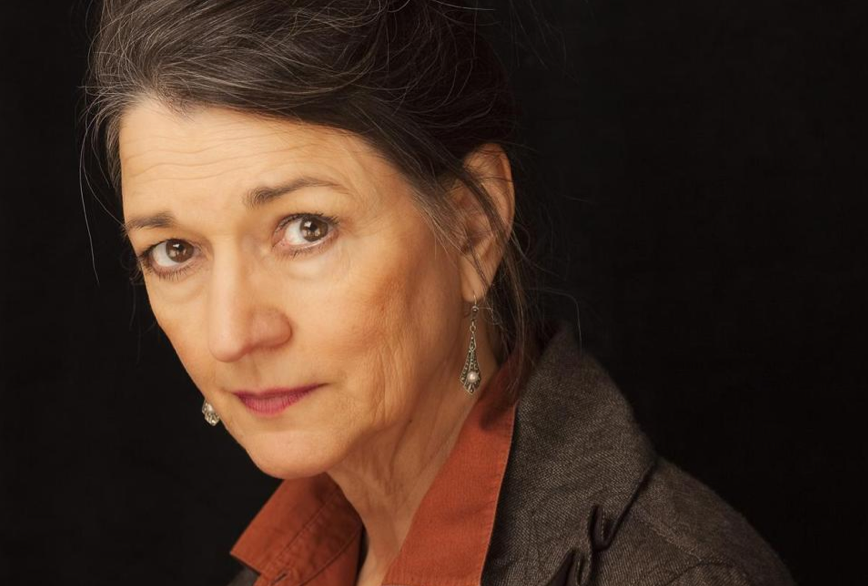The master of suspense, Alfred Hitchcock, often stepped away from the movie set to refer to a small guide called “Plotto.” The guide lists three sets of 92 ideas that can be mixed and matched to create 1,462 permutations of stories, each with a beginning, middle, and end. Plotto’s plot points were elemental, involving love and death, money and fame, and scheming and revenge.
 Hitch might just as well have used “Grimm’s Fairy Tales,” for “Plotto” gave Hitchcock a connect-the-dots formula for writing modern, adult fairy tales. As Marina Warner shows in Once Upon a Time, few things in the human experience run deeper than fairy tales. In enchanted forests and other fantastical worlds, flat characters live outrageous lives, cutting to the core of human fears and desires. Fairytale plots and characters, in fact, offer the tropes that can be found in just about every story we tell.
Hitch might just as well have used “Grimm’s Fairy Tales,” for “Plotto” gave Hitchcock a connect-the-dots formula for writing modern, adult fairy tales. As Marina Warner shows in Once Upon a Time, few things in the human experience run deeper than fairy tales. In enchanted forests and other fantastical worlds, flat characters live outrageous lives, cutting to the core of human fears and desires. Fairytale plots and characters, in fact, offer the tropes that can be found in just about every story we tell.
All Stories Are Mashups
Stories are really mashups of set pieces. The stories remain the same; only the particulars vary.
In fact, Christopher Booker argues that there are only seven plots—the quest, rags to riches, overcoming the monster, homecoming, comedy, tragedy, and rebirth. Others argue that there is only one plot–man’s desire to return to a state of innocence or unity, as expressed by the story of Adam and Even in the Garden of Eden.
Fairy Tales
In Once Upon a Time, Marina Warner shows that few things in human experience run deeper than fairy tales. In enchanted forests and other fantastical worlds, flat characters live outrageous lives, cutting to the core of human fears and desires. Fairy-tale plots and characters, in fact, feature the tropes that can be found in just about every story we tell. Warner surveys centuries of fairy tales and academic research about them. She ties these tales to virtually every aspect of culture — mythology, art, music, movies, games, and psychology. We need them, she says, to make sense of the world.
On one level, she notes, fairy tales seem childish and unworthy of attention. The basic rules of physics are suspended. Fairies and monsters of all descriptions lurk, using magical powers to seduce, fool, metamorphose, taunt, torture, rape, maim, and kill. Sexuality, jealousy, and revenge animate everyone, even innocent girls bringing picnic baskets to dear old grandmothers. Enchanted trees, streams, and inanimate objects come to life, producing tabloid-style gore.
Gruesome and Extreme
Fairy tales come steeped in gruesome and explicit imagery. In contrast to today’s politically-correct sensibilities, folk stories revel in death, torture, sexual perversion, and betrayal. But one tale by the Brothers Grimm went too far.
In “Playing Butchers,” a man slaughters a pig as his children watch. Afterward, one child says to another: “[Y]ou be the little pig, and I’ll be the butcher.” The possibility of copycats horrified 19th-century Germans. Wilhelm Grimm argued that the story taught a valuable lesson about make-believe and real life. But no matter. The story was cut from the anthology.
Fairy tales also speak to everyday terrors as well as hellacious monsters. “The Boy Who Wanted to Learn How to Shudder,” for example, “passes unscathed through a series of fearsome and ghoulish tests, and never shrinks: hanged men from a gallows, a haunted castle, a game of skittles with skulls and bones.” But when the princess spills a bucket of minnows onto a bed, he freaks out. Thus the ultimate lesson and role of fairy tales. Sometimes it’s the trifles that touch us most profoundly.
The Power of Imagination (and Projection)
So much perverse action fills these tales that the characters themselves are not rounded but mere vessels for wild imagination. “There is no psychology in a fairy tale,” notes Philip Pullman, the British author of fantasy novels. “The characters have no interior life. . . . One might almost say that the characters in a fairy tale are not actually conscious.” With the characters lacking depth, the readers project their own lives — and fears and fantasies — onto them.
If fairy tales seem childish, they often embed dangerous adult messages. The more fantastical a story, Warner writes, the greater the opportunity to take on serious issues — and to confront powerful forces without retribution. Dissidents from Christ to Havel understand the power of parables, coded with messages about morality and power. These tales offer “protective camouflage” to speak truth to power. Kings and rich people alike are unmasked as petty and treacherous.
Confronting Evil
Classic tales like “Little Red Riding Hood,” “Bluebeard,” “Cinderella,” “Hansel and Gretel,” and “Snow White” all depict evil beings in charge of isolated, enchanted worlds. The victims’ innocence dooms them, until someone comes to the rescue. But even when the world is set right again, the world’s brutality never leaves consciousness. Fairy tales accept that life is tragic, horribly unfair.
Warner examines the French story of Bluebeard, a wealthy aristocrat shunned by society. Bluebeard tells his young wife that he must take a trip. He gives her a key that unlocks doors to his chateau’s many treasures — then warns her against opening one particular door. Naturally, she can’t resist. When she opens the door she discovers an ocean of blood and Bluebeard’s former wives, murdered, hanging on hooks. In the end her brothers rescue her by killing Bluebeard.
Before you go . . .
• Like this content? For more posts on writing, visit the Elements of Writing Blog. Check out the posts on Storytelling, Writing Mechanics, Analysis, and Writers on Writing.
• For a monthly newsletter, chock full of hacks, interviews, and writing opportunities, sign up here.
• To transform writing in your organization, with in-person or online seminars, email us here for a free consultation.

